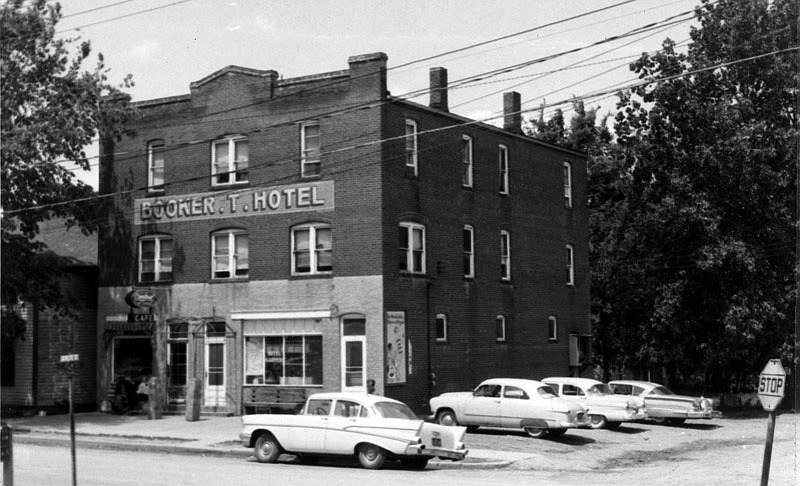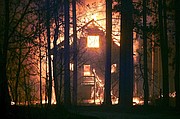A once-thriving commercial and residential area will be commemorated at 3 p.m. Friday with a plaque dedication in the 600 block of Lafayette Street.
The Lafayette Street and The Historic Foot District supporters have further plans to remember the segregation-era community lost to urban renewal in the 1960s.
"Lafayette Street was never truly considered a part of the economic development and growth of Jefferson City but merely a vehicle to sustain the commercial and economic needs of a segregated minority population, which was located in the immediate surrounding area," according to a news release. "This could not have been a more false impression of Lafayette Street."
With renewed interest in the area once called The Foot and now mostly park and recreation areas owned by the city and Lincoln University, organizer Arthur Brown said they hope to see the area's history remembered while promoting its rejuvenation.
As the Whitton Expressway interchange at Lafayette Street nears completion, the Missouri Department of Transportation has plans to mitigate its impact on that area, said Brianne Greenwood, senior historic preservation specialist.
The first effort will be in partnership with the Historic City of Jefferson to collect oral histories from anyone who worked, lived or visited The Foot, particularly between 1910-60, Greenwood said.
"We're looking for stories about life in general," she said.
A second effort may be informative kiosks on the city's Greenway crossing these blocks.
The friends group also has greater plans for remembering the area's history, including listing the area on the National Register of Historic Places as an archaeological site.
Glover Brown also hopes partnerships can be made with Lincoln University and other entities to return businesses to the area. Despite the missing buildings, The Foot continues to be a gathering place for the university's annual homecoming visitors, Arthur Brown said.
And the friends group's long-term hope is to establish a museum to house artifacts from the long-lost area.
"We do this so the memories and history do not fade," Glover Brown said. "We're trying to create a situation where our memories and history can be saved for generations in the future."
For about 60 years, beginning at the turn of the 20th century, the corners of Lafayette and Dunklin streets and surrounding blocks were the heart of the black community.
Black-owned businesses included restaurants, barber/beauty shops, a hotel, grocery stores and bars. Social centers included the still-standing, historic Jefferson City Community Center, churches, schools, homes and clubs.
As the only place for visiting black individuals during segregation to eat or stay, places like The Green Onion nightclub and Tops Restaurant served famous black entertainers and athletes including Ike and Tina Turner, Louis Armstrong, Ray Charles, "Satchel" Paige, "Wilt" Chamberlain, Althea Gibson and the Harlem Globetrotters.
The historic marker project to remember this part of Jefferson City history has been a cooperative project with the Friends of Lafayette Street and The Historic Foot District, the city and the Historic City of Jefferson.
Glover Brown said he and his brother, Arthur, were inspired by the sign and commemorative effort made in Columbia recently regarding its historic black community of Sharp End.
"This should have been done decades ago," Glover Brown said.
As children of business owners in that area, the Brown brothers said they were devastated by urban renewal claiming what their parents meant to be their legacy. In addition to losing their livelihood, the family also lost their home.
"As a result, we were thrust into an environment that was alien to us at a time of community segregation," Glover Brown said. "We met a lot of hostility when we moved."
Brown said he hopes the sign will help begin healing for others like his family so dramatically affected by events more than 50 years ago.
Former residents, business owners or visitors to The Foot area are particularly invited to attend the dedication, he said.
The dedication was timed to coincide with the Friday and Saturday events for Juneteenth Celebration, which commemorates the last of American slaves who were liberated June 19, 1965.
"As a small child, I grew up on Moreau Drive, and we would always go home through Lafayette (Street) and up through Lincoln to Fairmount (Drive)," said Presiding Commissioner Sam Bushman. "The Foot was always so vibrant with people and great cars.
"Urban renewal removed a lot of great history. We were just very ignorant about the segregation that fostered this community."
Related article: Archaeological pieces of African-American neighborhood unearthed


